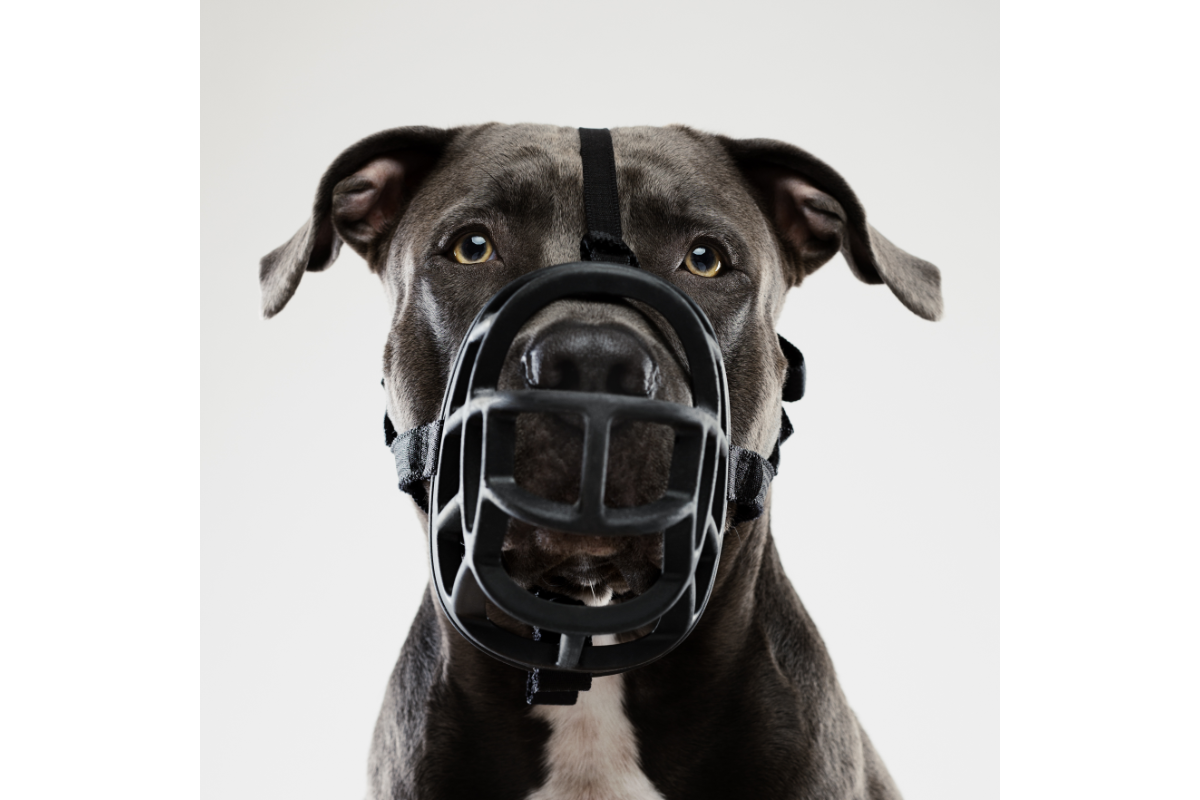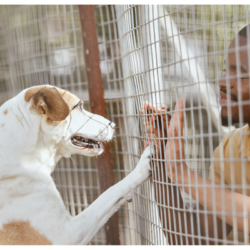The wearing of muzzles by dogs is a subject that gives rise to much debate, both among pet owners and in the veterinary and legislative communities. Often perceived as a restrictive control tool, the muzzle is in fact an accessory which, if properly used, can contribute to public safety, animal welfare and better cohabitation between dogs and their environment.
What are the uses of a muzzle?
Muzzles are compulsory for all category dogs, whether docile or not, and for all dogs using public transport. This accessory plays a crucial role in behavioural therapy, particularly when fears can lead to aggressive reactions. Contrary to popular belief, a muzzle is not a punishment but a safety tool. When properly fitted, it can be accepted without constraint by the dog.
Muzzles are used in a variety of situations: to prevent behavioural problems, to prevent bites, to protect during veterinary treatment, and to comply with legal requirements, particularly for so-called “dangerous” dogs. It prevents the animal from using its jaws, thereby reducing the risk of bites. It also prevents undesirable behaviour, such as removing a dressing, barking or biting out of fear.
Muzzles are suitable for dogs of all sizes. Even a small dog can cause serious injury. The pressure exerted by a Jack Russel reaches 50 kg/cm², while a Pitbull can reach 500 kg/cm². Wearing a muzzle is therefore a precautionary measure in high-risk situations, such as on public transport or in close proximity to children.
For the muzzle to be well accepted, it is crucial to accustom the dog gradually and positively. This can include pleasant activities, such as walks with sniffing. In the event of injury or stress, a muzzle can also facilitate veterinary care and prevent defensive behaviour.
Used appropriately, the muzzle becomes a management tool that guarantees everyone’s safety and improves cohabitation between dogs and their environment.
What does the law say?
Muzzles are compulsory for category 1 and 2 dogs, such as Pitbulls, Rottweilers and American Staffs, under French law. Article L.211-14-2 of the French Rural and Maritime Fishing Code stipulates that these dogs must be muzzled on the public highway, in communal areas of buildings, on public transport and in public places. This obligation is designed to guarantee public safety and specifically concerns so-called dangerous dogs.
The law classifies category 1 dogs (Staffordshire Terrier, Mastiff, Tosa) as attack dogs. Dogs must be muzzled and kept on a lead by an adult. Under article L.211-6, these dogs are not allowed in public places or on public transport, even if muzzled. What’s more, owners must register their dog with the Mairie, prove that the animal has been identified and vaccinated against rabies, and obtain a possession permit issued by municipal decree. Owners must also produce a sterilisation certificate for dogs in this category. In the event of non-compliance, the authorities will impose a fine of €450.
Category 2 dogs, defined as guard and defence dogs (Rottweiler, American Staffordshire Terrier), are subject to the same restrictions on muzzling in public places and on public transport. Article L.211-14 requires a behavioural assessment to be carried out by an approved vet, and the dog must be covered by civil liability insurance. A dog licence is compulsory, and offenders are liable to severe penalties.
The reference texts include law 99-5 of 6 January 1999 and law 2008-582 of 20 June 2008, which strengthen prevention measures against dangerous dogs. Wearing a muzzle is an essential public safety measure, governed by strict laws, designed to protect people and prevent accidents; although the breed of dog is not the only factor affecting its behaviour.
Choosing the right muzzle
For category 1 and 2 dogs, it is essential to choose a strong, comfortable muzzle. These dogs, considered potentially dangerous, must wear a leather muzzle when on the public highway, in accordance with the law. For occasional situations, such as a visit to the vet, use a nylon muzzle, which, despite being less robust, is suitable for preventive use.
It’s crucial to choose the right size by measuring your dog’s muzzle with a tape measure. Choose a muzzle that’s loose enough to slip a finger between the tape measure and the muzzle, to ensure the animal’s comfort. Dog trainers and dog handlers prefer leather muzzles for their strength and durability, especially for dogs with short muzzles, such as Boxers.
Striking muzzles, used by dog handlers for guarding missions, transform the muzzle into a defensive weapon after specific training.
Whatever type of muzzle you use, train your dog calmly and gradually. A muzzle should allow the animal to breathe and drink easily. Plastic or steel basket or cage muzzles are the most suitable, as they respect the dog’s physiological needs. Avoid closed nylon muzzles, which do not allow the dog to pant properly, except for brief handling in a cool environment.





